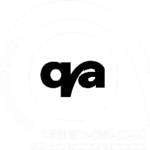When the Christian Reformed World Relief Committee (CRWRC) begins working in a new community, it doesn’t go alone. In fact, in nearly all of the countries where CRWRC carries out long-term community development programs, it does so alongside local partner organizations. These partner churches and community organizations work at the grassroots level to identify the communities in need and propose solutions.
CRWRC’s primary task is to train and equip these partners, building their capacity to carry on ministry after CRWRC staff members are gone. But it wasn’t always this way. In fact, when CRWRC began ministry in the 1960’s it did so by sending North American men and women overseas with specific mandates to start agriculture programs, teach literacy, or train health care workers. How and where did the shift to partnerships occur?
 CEPAD, a coalition of 60 small churches in Nicaragua, was started following the 1972 earthquake but grew into a successful community development organization and long-time CRWRC partner. |
 By working through local partners, CRWRC was able to reach even the most remote communities with training and support on topics such as agriculture. |
 CRWRC’s early partners carried out a variety of self-help programs that included adult literacy, maternal & child health, nutrition, agriculture, and small business development. |
 CRWRC began working in Nicaragua in 1972 following a massive earthquake. This photo, taken during that year, shows part of CRWRC’s response that provided food to earthquake survivors. |
 While CRWRC no longer partners with CEPAD, it does have five Christian community partners in Nicaragua including the YMCA of Nicaragua, Christian Medical Action, Christian Center for Human Rights, the Nehemiah Center, & the Luke Society Foundation of Nicaragua. |
When the Christian Reformed World Relief Committee (CRWRC) begins working in a new community, it doesn’t go alone. In fact, in nearly all of the countries where CRWRC carries out long-term community development programs, it does so alongside local partner organizations. These partner churches and community organizations work at the grassroots level to identify the communities in need and propose solutions.
CRWRC’s primary task is to train and equip these partners, building their capacity to carry on ministry after CRWRC staff members are gone. But it wasn’t always this way. In fact, when CRWRC began ministry in the 1960’s it did so by sending North American men and women overseas with specific mandates to start agriculture programs, teach literacy, or train health care workers. How and where did the shift to partnerships occur?
The answer begins in Latin America.
“It all started in Latin America and took stronger root there,” said Jim Boldenow, who worked as CRWRC’s Latin America Director in the 1980’s. “Partnerships and programs worked well there because the people were ready. The countries were becoming democratic, there was a decent education system, and there was a universal language – Spanish- that meant that materials written for one community could easily be used elsewhere. The people were also community-minded. They shared common goals and were willing to work together.”
Nicaragua is a great example. On Christmas Eve in 1972, Managua, Nicaragua was destroyed by an earthquake. Before the quake, several missionaries from a variety of denominations had come to Nicaragua and each started their own church. Following the quake, the needs were so extensive that these tiny churches were overwhelmed.
Sixty small denominations decided to work together and form a new organization called CEPAD – which stood for the Evangelical Committee for Relief and Development. As international funding organizations, such as CRWRC, began to look for ways to send volunteers and aid to Nicaragua, they quickly realized that CEPAD offered an ideal point of contact. By channeling resources to CEPAD, organizations could disseminate aid throughout Nicaragua via its network of small churches.
“CRWRC had the good fortune of running into a really intelligent, well-devised, church-run agency in CEPAD,” said Peter Limburg, who worked for CRWRC with CEPAD following the 1972 quake. “The president of the board of CEPAD, Gustavo Parajon, was a trained doctor with a Masters from Harvard in community medicine. He was a sharp guy. He saw right away that to make the earthquake relief efforts work he had to involve the local churches. He was able, by the strength of his integrity, to bring all of these sixty or so denominations together under CEPAD.”
As CEPAD responded to emergency needs following this disaster, they built a grassroots organization extended into tiny churches in villages that could be reached only by mule and would otherwise have been inaccessible. By partnering with CEPAD, CRWRC could reach all the way across the country.
Carrying out CRWRC’s ministry by working through CEPAD also fit well with Limburg’s philosophy.
“I worked for the Peace Corps in Panama from 1966-1967.The training we received there was pretty much what CRWRC would later call the ‘community development approach.’ You work with the local community, provide them with resources and training and help them to build their own institutions,” said Limburg. “We took that bias with us to the field and worked through CEPAD."
While CEPAD started as an organization to provide earthquake relief, they soon began doing more than just emergency response.
“They, and other Nicaraguan organizations such as Provadenic and Alfalit, had lots of programs designed to help people figure out ways to improve their lives,” said Limburg. “They made cooperatives and helped organize villages so that they had political power to bring to the government. Their health model would take young women from the village and in six weeks those women were able to treat 80% of illnesses that they ran across. The other 20% they were trained to recognize and refer to a doctor. They also trained people to be agricultural leaders to disseminate learning into communities. All of this was combined with a very evangelical and protestant training of pastors. It was quite an impressive and many-sided attempt at being an influence in the country.”
“The staff of CEPAD and Provadenic were a bright bunch of people,” added Boldenow. “They were in touch with what was happening in the communities and developed programs that would address these needs and be quite measurable. They were doing baby weighing, rural development, income generation programs – the kinds of stuff that CRWRC would later do all over the world. They were doing it first and were really organized.”
And they were effective. As CRWRC worked alongside these local partners, CRWRC staff recognized that they could stretch their dollars further and reach more people in need by tapping in to these local resources rather than trying to do it all alone.
“We recognized that we didn’t have all the answers,” said Limburg. “There were people on the ground – good Christian brothers and sisters – who knew all about the local conditions. They knew what was lacking and what the solutions could be. It costs a lot of money to send teams of North American people overseas. You have to orient them, have an acculturation process, there are health risks and a lot of other considerations. We recognized that if we could send one well-prepared person who could relate to the local churches and help them form local organizations such as CEPAD, it would be a more efficient way to do the church’s business.”
“Dollar for dollar, it makes more sense to have the national organizations carry out the ministry instead of North Americans,” added Boldenow. “It is coordinated with the community, it is culturally appropriate, and it is much more effective and efficient. CRWRC could never pay that many people.
“In addition, with this way of working you leave organizations and people totally in power to run their own stuff without having foreign staff there. In case of crises, North American staff might have to leave a country. Those churches and leaders would stay. They could carry on the work long after CRWRC was gone.”
And it wasn’t just in Nicaragua. Throughout the 1970’s, CRWRC began to work with and through other local, Christian partners in Latin America as well: CEDEN in Honduras, AMEXTRA in Mexico, and Alfalit in the Dominican Republic to name a few.
The next step was to take this learning to other parts of the world.
“We had firm evidence that National community development worked well in Central America but did not know if it would work in other parts of the world,” recalls John De Haan, CRWRC executive director from 1977-1998. “We asked Peter Vander Meulen to do a National Development field test in Bangladesh.”
Through that pilot project, VanderMeulen attempted to infuse some community development principles that were learned from CRWRC’s experiences in Latin America and apply them to agricultural projects in Bangladesh. While the type of partnership in Bangladesh didn’t exactly mirror what was happening in Latin America, VanderMuelen said that it did result in empowering local staff to take over the entire program and grow it into a large and successful agency.
Soon, CRWRC was intentionally incorporating community development and partnership practices throughout Asia, Africa, and around the world.
It wasn’t always easy. There were some debates about whether CRWRC should work only with Christian Reformed Church partners or open itself up to a broader spectrum of denominations. There were challenges in getting partner organizations to report on expenses, beneficiaries, and successes in the way CRWRC expected. And there were hurdles to overcome in countries where civil society, a common language, and a desire to work together weren’t as prevalent as they were in Latin America. Overall, though, the shift went smoothly and resulted in the quality programs that CRWRC is known for today.
In the 1990’s, CRWRC developed its partnership mentality even further by recognizing that working with community-level partners could not be a top-down approach. Instead, these relationships had to be entered into as a time of mutual sharing and receiving. They were to be truly equal partnerships. Only then could true transformation happen.
“CRWRC’s ideas about partnership were adopted and accepted by others. We had quite an impact on overall development around the world because of this,” Boldenow said. “Because of our work through partnerships, CRWRC spent time defining ways to measure and grow the organizational capacity of our partners. These organizational measurement tools were a significant contribution that CRWRC has made to other international agencies.”
Today, CRWRC works with 84 partner organizations in 30 countries. As a result, CRWRC’s programs are able to reach 4,522 communities and approximately 1.6 million people each year.



